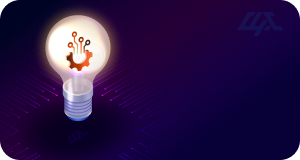Future Trends in Multi-Cloud Security
Stay ahead of the curve with future trends in multi-cloud security. Explore emerging technologies and strategies to protect your cloud infrastructure in the evolving threat landscape.

Introduction
As the digital landscape continues to evolve, so do the threats and challenges associated with cloud security. For businesses leveraging multi-cloud environments, staying ahead of security trends is crucial to protect their infrastructure and data. This article explores the current and emerging trends in multi-cloud security, predicts future challenges, and offers strategies to prepare for these changes. Additionally, we will discuss how Cross4Cloud (C4C) adapts to these trends to ensure robust security across multiple cloud platforms.
Overview of Current Multi-Cloud Security Trends
The adoption of multi-cloud strategies is driven by the need for flexibility, scalability, and resilience. However, this approach also introduces complex security challenges. Current trends in multi-cloud security include:
Increased Focus on Data Encryption: Ensuring data is encrypted both at rest and in transit is a fundamental practice to protect against breaches and unauthorized access.
Identity and Access Management (IAM): Robust IAM systems are essential to manage user permissions and roles across multiple cloud environments, minimizing the risk of insider threats and unauthorized access.
Zero Trust Security Model: Implementing a Zero Trust approach, which assumes that threats could be internal as well as external, is becoming standard. This model requires strict identity verification for anyone accessing resources within the network.
Cloud Security Posture Management (CSPM): CSPM tools continuously monitor cloud environments to ensure compliance with security policies and standards, helping to identify and remediate risks.
Emerging Technologies in Multi-Cloud Security
Several emerging technologies are poised to significantly enhance multi-cloud security. These include AI and machine learning, blockchain, and quantum cryptography.
1. AI and Machine Learning
AI and machine learning are revolutionizing cloud security by automating threat detection and response. These technologies analyze vast amounts of data to identify patterns and anomalies that may indicate security threats, enabling faster and more accurate threat detection.
Predictive Analytics: AI-driven tools can predict potential security incidents based on historical data and current trends, allowing for proactive defense measures.
Automated Incident Response: Machine learning algorithms can automate responses to common security incidents, reducing the time and effort required from human security teams.
2. Blockchain for Security
Blockchain technology offers a decentralized and immutable way to secure data transactions. Its application in cloud security can enhance data integrity and transparency.
Secure Data Sharing: Blockchain enables secure and verifiable data sharing across multiple cloud platforms without the need for a central authority.
Immutable Logs: Using blockchain to create immutable logs ensures that once data is recorded, it cannot be altered, providing a reliable audit trail for security and compliance purposes.
3. Quantum Cryptography
Quantum cryptography leverages the principles of quantum mechanics to create highly secure encryption methods. This emerging technology promises to make data virtually unhackable, significantly enhancing cloud security.
Quantum Key Distribution (QKD): QKD uses quantum particles to transmit encryption keys, making it impossible for attackers to intercept the keys without being detected.
Predicting Future Security Challenges
As technology advances, new security challenges will emerge. Key future challenges include:
Complexity of Managing Hybrid Environments: The integration of on-premises, private cloud, and multiple public cloud environments will increase complexity, making unified security management more challenging.
Evolving Cyber Threats: Cyber threats will continue to evolve, with attackers using more sophisticated methods to breach cloud defenses.
Compliance and Regulatory Pressures: Adhering to an increasing number of regulatory requirements across different regions and industries will remain a significant challenge.
Strategies to Prepare for Future Trends
To stay ahead of these future challenges, businesses should adopt the following strategies:
Invest in Advanced Security Tools: Implement AI-driven security tools, blockchain solutions, and quantum cryptography to enhance protection.
Adopt a Zero Trust Model: Continuously validate users and devices to minimize the risk of insider threats and unauthorized access.
Regular Security Audits and Updates: Conduct regular security audits and update security measures to stay compliant with evolving regulations and standards.
Educate and Train Staff: Ensure that all employees are aware of security best practices and are trained to recognize and respond to potential threats.
How Cross4Cloud Adapts to Future Security Trends
Cross4Cloud (C4C) is designed to help businesses navigate the complexities of multi-cloud security by integrating advanced security features and providing a unified platform for managing security across multiple cloud environments.
Unified Dashboard: C4C offers a centralized dashboard for monitoring and managing security across all public cloud platforms, providing real-time insights and control.
AI-Driven Security: C4C incorporates AI and machine learning to automate threat detection and response, ensuring that security measures are always up-to-date and effective.
Compliance Management: C4C helps businesses maintain compliance with regulatory standards by offering automated compliance checks and detailed reporting.
Robust IAM: C4C’s robust identity and access management tools ensure that only authorized users can access sensitive data, minimizing the risk of breaches.
Conclusion
Staying ahead of future trends in multi-cloud security is crucial for protecting your business’s cloud infrastructure. By leveraging emerging technologies such as AI, blockchain, and quantum cryptography, and by adopting proactive strategies, businesses can enhance their security posture and prepare for the evolving threat landscape. Cross4Cloud provides the tools and features necessary to implement these advanced security measures, ensuring that your multi-cloud environment remains secure and compliant.
Explore how Cross4Cloud can enhance your multi-cloud security strategy and help your business stay ahead of emerging threats. Visit our website to learn more about our comprehensive solutions.
Tags
Related Posts by Cloud Trends
TAKE CONTROL OF YOUR CLOUDS!
Discover the opportunity to manage your multi-cloud usage under $5,000 per month-for free. Simplicity and control are now within your reach!


